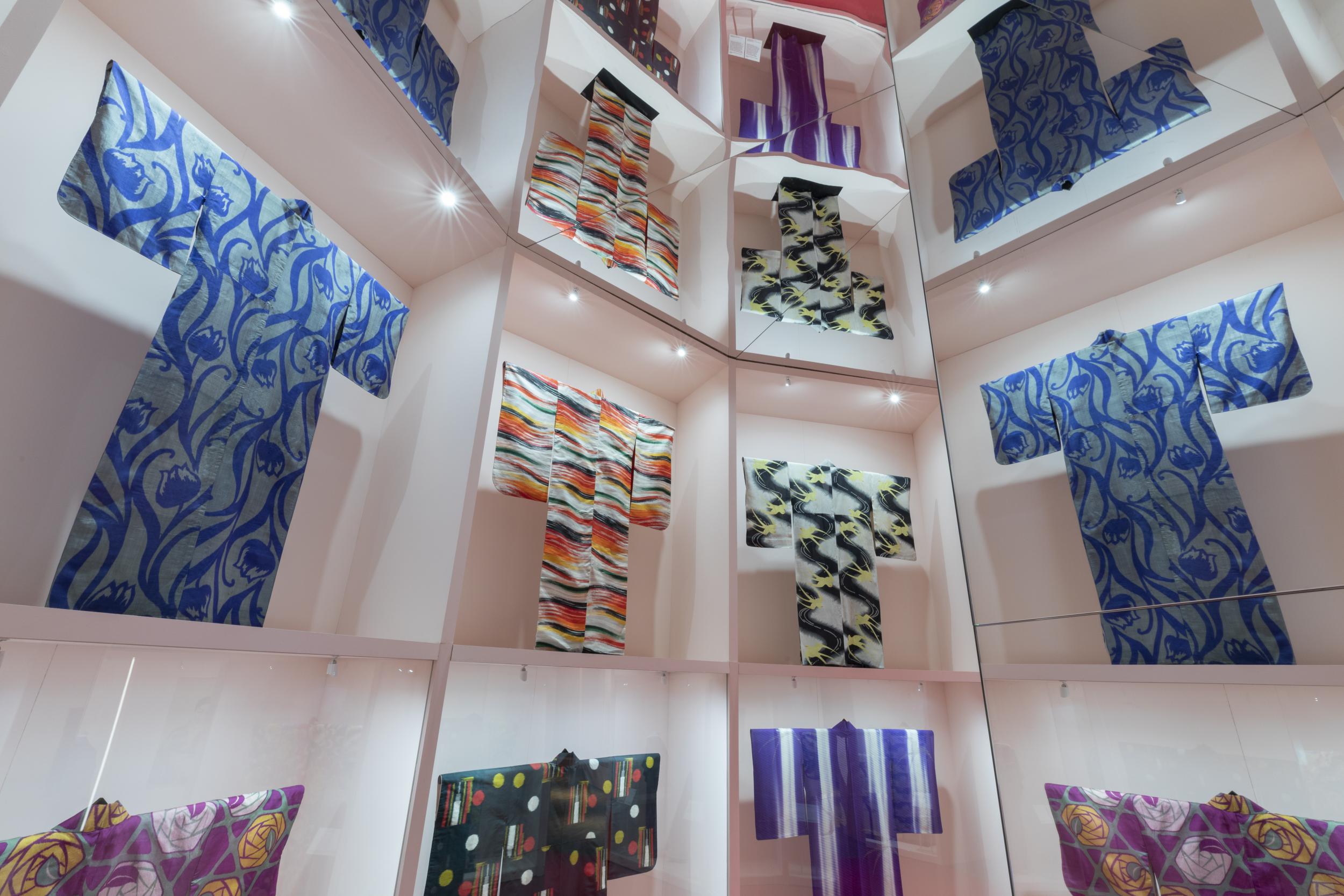This website uses cookies so that we can provide you with the best user experience possible. Cookie information is stored in your browser and performs functions such as recognising you when you return to our website and helping our team to understand which sections of the website you find most interesting and useful.

The Victoria and Albert Museum (V&A) has a history of staging remarkable fashion exhibitions, from last year’s Christian Dior retrospective – which became its most visited event ever – to the phenomenal success of 2015’s Alexander McQueen: Savage Beauty.
But for its latest endeavour, the gallery has eschewed this tried-and-tested format by focusing on the sartorial and social significance of a single fashion item: the kimono.
Meaning “the thing to wear”, the term kimono was first adopted in the mid-19th century and is used to describe a simple, straight-seamed piece of fabric that is worn wrapped left side over right and secured with a sash called an obi.
The exhibition, which runs from Saturday 29 February until 21 June 2020, is titled “Kimono: Kyoto to Catwalk” and charts the evolution of the kimono from its origins in the 1660s to present day, both in Japan and the rest of the world.
The opening segment begins in the mid-17th century, when a vibrant fashion culture emerged in Japan, and invites guests to learn more about the fashion-conscious society of the time, in which “desire for the latest look was fed by a cult of celebrity and encouraged by makers, sellers and publishers” – not too dissimilar to today.
The showcase continues by exploring the impact of the kimono on western style. On display are garments made in Japan for the Dutch, kimono tailored from French brocade and Indian chintz, and a 19th-century segment on the beginnings of the worldwide craze for Japanese art and design.
The final section of the exhibition shows how the kimono has continued to inspire fashion around the world with examples from designers, and iconic film and performance costumes.
Highlights include the dress designed for Björk by Alexander McQueen and worn on the album cover Homogenic, a piece owned by Queen frontman Freddie Mercury, the Jean Paul Gaultier ensemble worn by Madonna in the music video for her 1998 song “Nothing Really Matters” and original Star Wars costumes modelled on kimono by designers John Mollo and Trisha Biggar.
Anne Jackson, curator of Kimono: Kyoto to Catwalk, explained the significance of acquiring Mercury’s clothing for the exhibition.
“Freddie Mercury was one of the most talented and charismatic musicians and performers of the 20th century and we are delighted to display a kimono that belonged to him in the exhibition,” she said.
Created with Sketch.
Created with Sketch.
1/15
2/15
3/15
4/15
5/15
6/15
7/15
8/15
9/15
10/15
11/15
12/15
13/15
14/15
15/15
1/15
2/15
3/15
4/15
5/15
6/15
7/15
8/15
9/15
10/15
11/15
12/15
13/15
14/15
15/15
“Mercury’s wearing of a kimono reveals how this iconic garment has the power to transcend national, cultural, sexual and gender identities.”
Elsewhere, designs by Yves Saint Laurent, Rei Kawakubo and John Galliano reveal the kimono’s role as a constant source of inspiration for fashion designers, while paintings, prints and other objects throughout the exhibition provide additional context to the fascinating story of the kimono in terms of style, gender norms, politics and propaganda.
“From the sophisticated culture of 17th-century Kyoto to the creativity of the contemporary catwalk, the kimono is unique in its aesthetic importance and cultural impact, giving it a fascinating place within the story of fashion,” Jackson adds.
Almost 300 works are featured throughout the exhibition, including kimono especially made for the show, some drawn from the V&A’s superlative collections and the rest generously lent by museums and private collections in Britain, Europe, America and Japan.
The exhibition Kimono: Kyoto to Catwalk runs from 29 February – 21 June 2020. Tickets are £16 and can be purchased here



 Africana55 Radio
Africana55 Radio 

